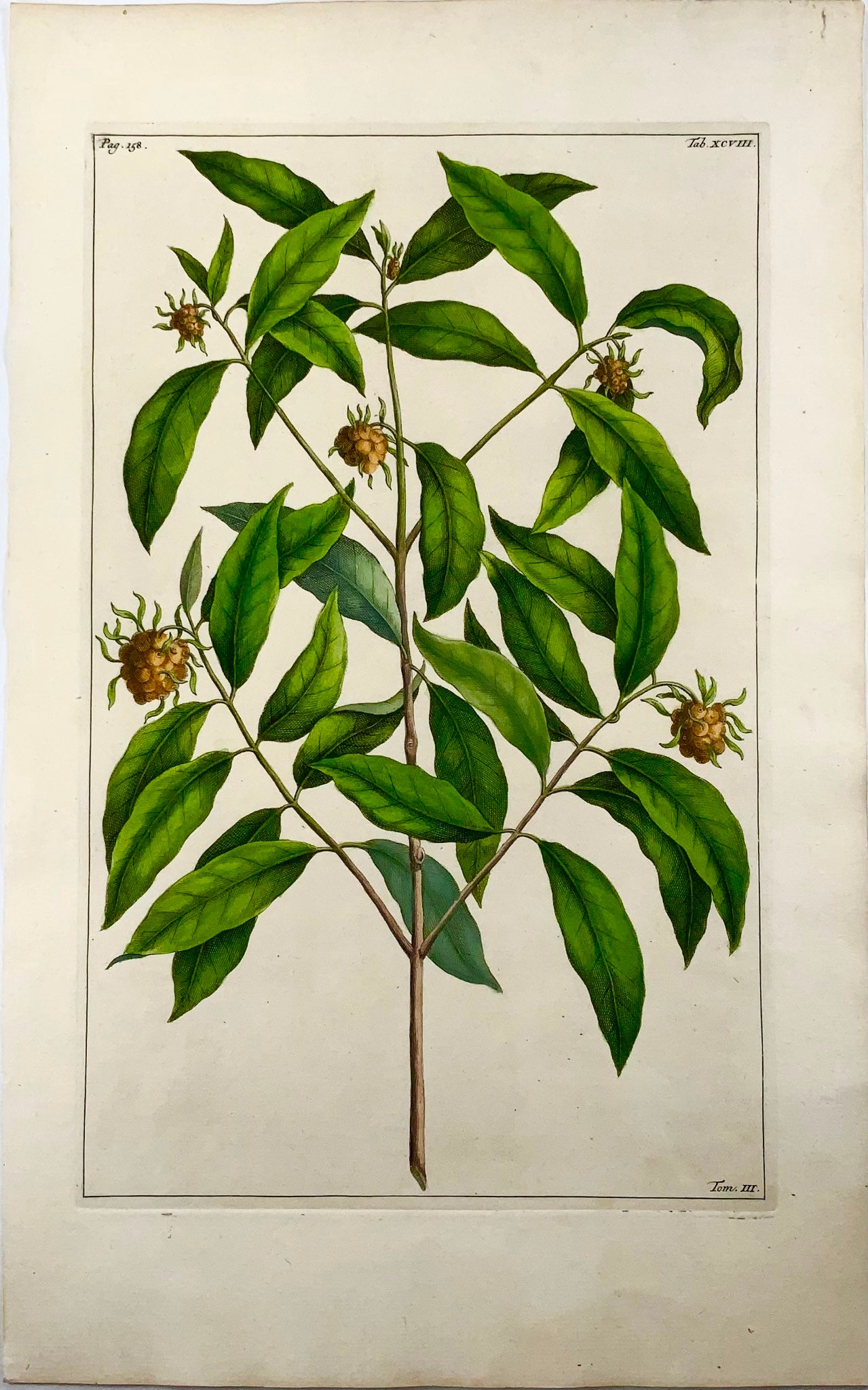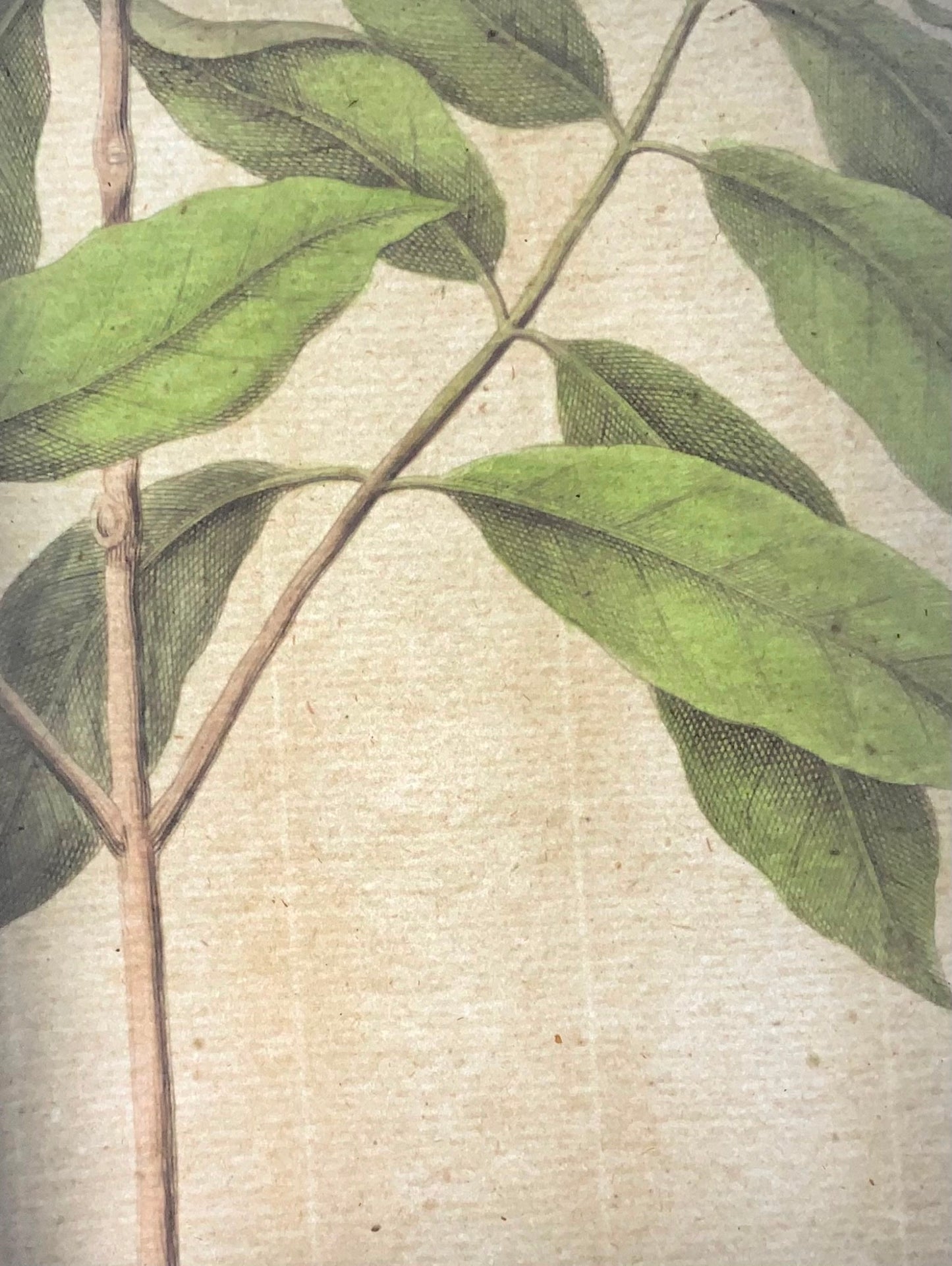1741 Morinda, Rumpf, Herbarium Amboinense, Indonesia, hand colour, folio, botany
1741 Morinda, Rumpf, Herbarium Amboinense, Indonesia, hand colour, folio, botany
Couldn't load pickup availability
Rumphius listed two species of local morinda on Ambon, which he described as Bancudus latifolia and Bancudus angustifolia. He claimed the first was a shorter ‘female’ species that grew close to inhabited places and was used medicinally, while the second was a ‘male’ wild variety that grew close to the seacoast and was preferred for dyeing (Heringa 1989, 118). The coastal variety has been subsequently identified as M. citrifolia var. braceata (Burkill et al 1966, 1517). The generic name is derived from the Latin words morus "mulberry", from the appearance of the fruits, and indica, meaning "of India".
Large folio
40.7 x 25.6 cm
Issued in Herbarium Amboinense, plurimas conplectens arbores, frutices, herbas, plantas terrestres & aquaticas, quae in Amboina, et adjacentibus reperiunter insulis Het Auctuarium ofte Vermeerdering op her Amboinsch Kruyd-Boek. 1741.
Hand colour.
Printed on fine chain linked watermarked paper.
Very light age toning to lower right corner.
Reference: Hunt 518
"Few important scientific works have come to print under greater difficulties" (Hunt).
"The flora of Amboina is typically Malayan, although a few Australian types are present as in other parts of the Malayan region. Practically all the species found along the seacoast are of general distribution from India to Malaya and Polynesia ."(Merrill).
In 1652 Rumphius enlisted with the Dutch East Indies Company and took up residence in Amboina in 1653. His sight was failing and by 1670, when his great work was ready for publication, he had become blind. His bad fortunes continued when in 1674 his wife was killed in an earthquake, and in 1687 a fire destroyed his library including his original drawings. These were drawn anew by his son Paul, and in 1692 the manuscript of the first six volumes was sent to Holland for publication, but the ship carrying it was destroyed by the French. Copies of the manuscript for the complete work did not reach Holland until 1697, where it languished for 32 years in the archives of the Dutch East Indies Company. Rumpf illustrated plants both from Amboina and from surrounding islands, particularly Banda.
Rumphius’ son Paul August undertook most of the illustrations, although it remains unclear who undertook the engravings.
Share





Subscribe to our emails
Subscribe to our mailing list for insider news, product launches, and more.




